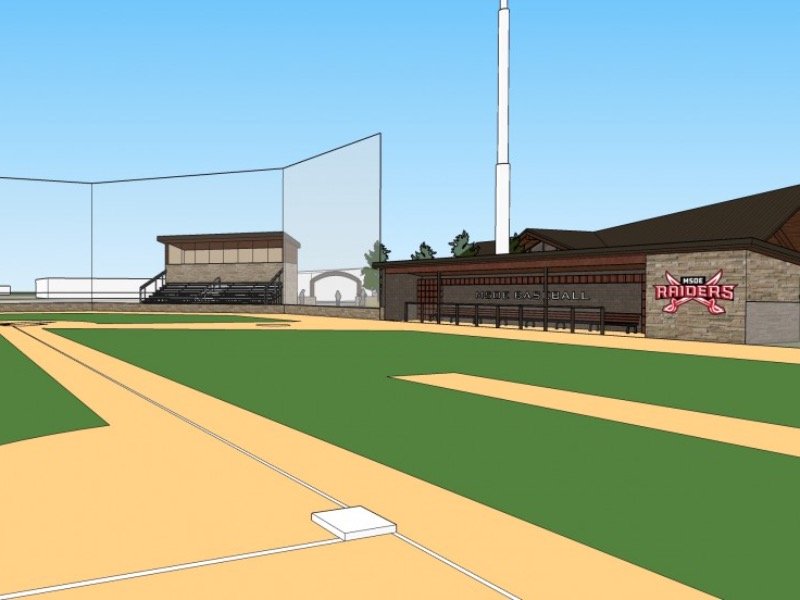In 2001, Dr. Eckhart Grohmann, Milwaukee School of Engineering Regent and Milwaukee businessman, gifted to MSOE his immense collection of art celebrating "man at work." But for years, it hung scattered around the campus and the city -- in three different gallery spaces and in faculty offices at MSOE and in Grohmann's workplace and home.
"It was a collection just begging for a museum," says James Kieselburg, collection and exhibition manager.
So, a museum it got. On Saturday, Oct. 27, the Grohmann Museum opened to the public, featuring the sculptures and paintings of Grohmann's expansive collection, "Man at Work."
Not that it was an easy process. It took several years to locate and acquire the former Federal Reserve Bank building, located at 1000 N. Broadway, and another year of renovation to turn the fortress-like structure into the museum it is today.
"We gutted the building and tore off the corner" to make room for the 82-ft. domed lobby, says director John Kopmeier, Jr.
But Kopmeier and Kieselburg would agree the efforts were well worth it. "It feels terrific," enthuses Kopmeier.
A passion for industrial painting
"Man at Work" is widely known as the collection of industrial artwork. Grohmann's collection comprises more than 700 sculptures and paintings depicting men and women laboring. Viewed as a whole, the collection becomes a visual evolution of labor, from men and women working on the farm or at home, to tradespeople like blacksmiths and cobblers and early doctors, to the factory workers of the industrial revolution.
Grohmann grew up in Germany, and as a child often visited his grandfather's quarry. There, he grew to appreciate and admire the ethics of hard work. So when he began his art collection in the 1960s, he stayed true to his roots.
"I'm in the foundry business," he says. "I have a nuts-and-bolts background. I buy art based on subject matter, not who painted it."
As a result, Grohmann's collection is very diverse. The earliest work, a painting depicting Vulcan, the Roman god, working at his forge, is circa 1580; the newest work is a sculpture of a sturgeon fisherman created in 2007. There are paintings by Richard Lorenz, an American painter from Milwaukee, to a painting by Willem Drost called "Geographer," and signed by -- yes -- Rembrandt: "The master himself," says Grohmann.
The paintings have personal meaning to Grohmann.
"Each painting has a story," he says.
Ask him, and he'll tell you about one of his largest single purchases -- a collection of 18 paintings he bought while visiting his mother in Germany for her 90th birthday (he waited until she went to take an afternoon nap before calling the auction house in Vienna) - or his riskiest acquirement -- a 17th century painting discovered -- where else? -- on eBay.
The museum houses around 375 paintings for a "semi-permanent installation," says Kieselburg. The featured exhibit at the museum's debut is "Physicians, Quacks and Alchemists," but it will be traded out and replaced with other pieces from Grohmann's collection for Gallery Night in April.
And the collection itself will continue to change and grow as well, as Grohmann, Kopmeier, Kieselburg and Grohmann's "bird dogs" -- as he calls his art hunters -- seek out new pieces to purchase. After all, says Grohmann, part of the fun is in the search.
The other part of the fun? Sharing his collection with others.
"If somebody has a hobby and can pursue it and can share it with others, why wouldn't they?" he asks.
Some Grohman Museum highlights:
• Rooftop garden, featuring a dozen bronze 9-ft. replicas of sculptures from the collection and six life-sized sculptures.
• Domed, 82-ft. lobby ceiling with 700-sq. ft. mural depicting industrial greats like Madame Curie, Johannes Gutenberg, Leonardo da Vinci, Thomas Edison and Albert Einstein.
• Colorful mosaic on lobby floor showing five manual laborers, drawn from paintings in the collection.
• Eight commissioned stained glass windows in “The Penthouse,” each inspired by paintings in the collection.







